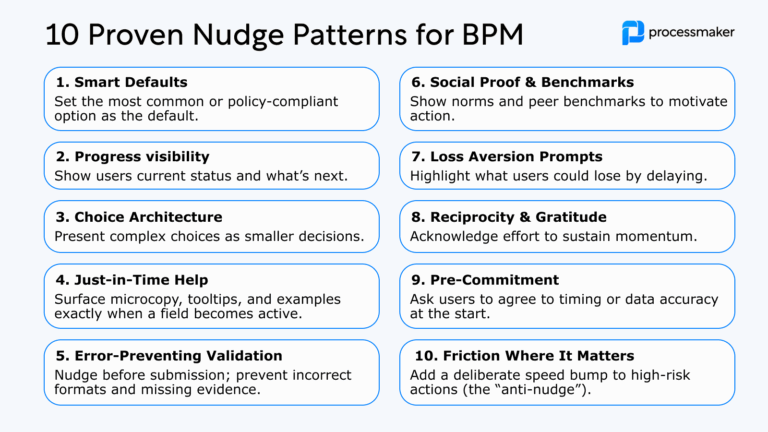Process visibility enables businesses to discover, monitor, and evaluate the entire flow of operations at both the macro and micro level. A transparent bird’s eye view facilitates informed decision-making and contributes to enhanced productivity. Let’s explore the nuances of process visibility, shedding light on its importance and how it can be optimized for superior business outcomes.
What exactly is process visibility?
At its core, process visibility is the capability to have a real-time, clear insight into the various processes that are operational within an organization. This visibility is crucial for tracking the interaction of various services within a workflow, particularly in distributed systems and microservices architecture. Through this, we can effortlessly track, analyze, and optimize the workflows, thereby achieving enhanced efficiency and effectiveness. We also foster an environment that encourages continuous improvement and innovation. Process visibility is one component within the larger business process management methodology.
Why process visibility is important in today’s business landscape
In today’s competitive business ecosystem, process visibility stands as a critical pillar of competitive advantage. Here are the primary reasons why we firmly believe in its indispensability:
- Data-driven insights. Enterprise leaders are empowered with actionable insights derived from data, facilitating informed decision-making that is aligned with organizational objectives.
- Optimized resource allocation. Organizations can optimize the allocation of resources by having a clear view of resource utilization and workflow patterns.
- Real-time monitoring. Businesses obtain the capacity to monitor the processes in real time, which assists in identifying and mitigating potential issues before they escalate.
- Compliance and governance. Businesses can ensure compliance and governance protocol adherence by having a transparent view of the process workflows.
- Efficient management of purchase orders. Effective management of purchase orders enhances process visibility and improves organizational accountability in procurement operations by tracking step dependencies and progress within sourcing requests and purchase requisitions.
Benefits of process visibility
Process visibility offers numerous benefits to organizations, including:
- Improved decision-making: With real-time visibility into operations, organizations can make data-driven decisions, reducing the risk of errors and improving overall efficiency.
- Enhanced efficiency: Process visibility helps identify bottlenecks and areas of inefficiency, enabling organizations to streamline workflows and optimize processes.
- Increased transparency: Process visibility promotes transparency and accountability within an organization, ensuring that all stakeholders have a clear understanding of operations and can track progress.
- Better resource allocation: With process visibility, organizations can allocate resources more effectively, ensuring that the right resources are allocated to the right tasks at the right time.
- Improved customer satisfaction: Process visibility enables organizations to respond quickly to customer needs, improving customer satisfaction and loyalty.
Implementing process visibility: a step-by-step guide
As we embark on the journey to enhance process visibility within our organization, we follow a structured and systematic approach. Here’s how we do it:
- Identification of key processes: We start by identifying the key processes that are pivotal to our business operations. The typical starting point is a process discovery exercise.
- Pick the right tools: We leverage state-of-the-art technology platforms to facilitate seamless tracking and monitoring of the processes. Common options include process intelligence, process mining, and task mining.
- Development of metrics and KPIs: We develop suitable process metrics and KPIs to measure the performance and outcomes of the processes.
- Continuous improvement: We cultivate a culture of continuous process improvement, where we are constantly seeking ways to refine and enhance our processes.
Strategies for sustaining process visibility
To sustain process visibility, organizations can implement the following strategies:
- Process mapping: Create detailed maps of business processes to identify areas of inefficiency and opportunities for improvement.
- Process mining: Use data analytics to analyze business processes and identify areas for improvement.
- Real-time monitoring: Implement real-time monitoring tools to track process performance and identify areas for improvement.
- Continuous improvement: Encourage a culture of continuous improvement, empowering employees to identify areas for improvement and implement changes.
- Training and development: Provide ongoing training and development opportunities to ensure that employees have the skills and knowledge needed to maintain process visibility.
Tips for maximizing real-time visibility
As we strive to maximize process visibility within our organization, we offer you these expert tips that have proven to be highly beneficial:
- Integrate systems. We focus on integrating various systems and platforms to facilitate seamless data flow and communication.
- Provide training and support. We invest in training and development programs to enhance the skills and competencies of our workforce, thereby facilitating improved process visibility.
- Get feedback and collaboration. We encourage feedback and collaboration, fostering a culture that is conducive to continuous improvement and innovation.
- Leverage advanced analytics. We leverage analytics to derive actionable insights from data, which aid in optimizing the processes and achieving superior outcomes.
You can’t fix what you can’t see
Process visibility stands as an essential element in the modern business landscape. Through the implementation of strategic initiatives and leveraging technology, we can attain a level of visibility that fosters transparency, efficiency, and innovation. By focusing on continuous improvement, we are set on a trajectory towards achieving operational excellence and business success.





